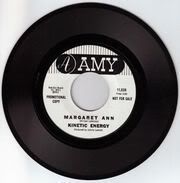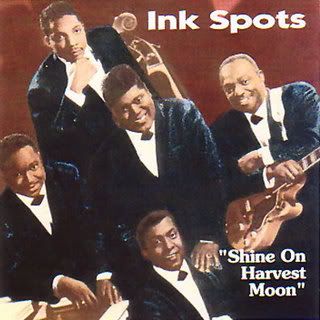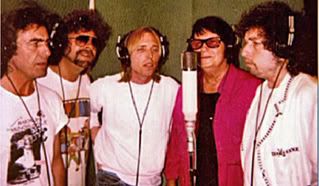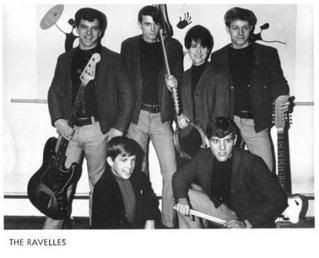
By STEVE SEYMOUR
There's nothing like a good battle of the bands.
That conclusion was reached four decades ago by Escanaba promoter and Bands Unlimited owner Gene Smiltneck and Upper Peninsula State Fair manager Clifford Perras.
"Perras hired me to manage the grandstand. He knew of our successful promotions and asked me for ideas that would appeal to teens. We agreed that a battle of the bands would be a good event," Smiltneck recalled. Dubbed Rock and Roll Combo Contest, the first such event was won by the Vertigoes of K. I. Sawyer Air Force Base on Aug. 16, 1967, before 2,600 fans.
Local interest grew for the second annual program, held Wednesday, Aug. 14, 1968, which pitted four professional Escanaba bands and a group from Iron Mountain against each other.
The five combatants included:
- Riot Squad- Brennan Williams, lead guitar; Jim Joque, rhythm guitar; Greg Curran, organ; Karin Beck, vocals; Bob Anzalone, bass; and Dan Curran, drums.
- Spoken For- Tom Caron, bass; Gary Rogers, drums; Matt Gadnis, organ; and Tom McGovern, lead guitar.
- Prophets of Doom- Larry Olivares, lead guitar; Dave Watchorn, bass; Jay Olivares, drums; and Mike Steede, rhythm guitar
- 3 Days and a Night- Kim Erickson, organ; Al Gossan, drums; Dick Peterson, lead guitar; and Tim Mulvaney, bass.
- Ravelles- Carmella Altobelli, vocals; John Richtig, lead guitar; Tom Lucas, guitar; Rand Alquist, drums; Brian Alquist, organ; and Ray Broullire, bass.
The panel of judges for the heated competition included Corky Mroczkowski, a member of several pioneering rock bands in Escanaba, including Johnny Evil and the Spirits; as well as Ruth Chase and William Groleau.
Although the local groups had plenty of cheering fans in the grandstand, the Ravelles took best band bragging rights home to Iron Mountain. Smiltneck wasn't surprised. "The Ravelles had a terrific show and were very successful in Upper Michigan and Wisconsin," he added.
The Ravelles split $150 in prize money. Two weeks after the Escanaba show the group released their first single, "Psychedelic Movement" on Mobie Records.
Finishing second were the Prophets of Doom, while Riot Squad took third place.
Two days later the fair hosted an amateur battle of the bands contest, organized by music teacher John Chown. Mroczkowski and Chase returned to judge this competition along with Mike Wagner.
The bands were expected to impress the judges and audience during a ten minute program. When the dust settled, the winner was Johnstown Flood of Escanaba. The group of 14-year-olds including Joel Coplan, Mark Olivares, Terry Steede and Tom Vardigan received $100 for their efforts.
Taking the $90 second prize was a Laurium band, Peaches. Other winners included H. M. S. Ark, Gladstone, third, $80; Rebels, Escanaba, fourth, $70; Screaming Butterfly, Gladstone, fifth, $60.
Repeating their victory the following year, Johnstown Flood won a second Battle of the Bands contest on Aug. 13, 1969. This time the Flood edged out The Chocolate Ash Can, which took second place honors, by just a single point.
Battle of the bands events at the fair were held for only a few years, but their popularity has never diminished.
"They were just as popular as 'American Idol' is today. I love watching that program because it reminds me of the great times we had promoting the dances and other events. I'm very sad that it all ended when times changed," Smiltneck commented.
Smiltneck recalled another battle of the bands he promoted. "We had a terrific one with Neptune from Escanaba versus an Iron Mountain band. Both bands had a lot of fans and we had a giant crowd at the Four Corner's Hall near Powers-Spalding. That was in the late 70s or early 80s.
"After promoting more than 5,000 events, it's hard to recall all the details of each one," he added.
Smiltneck, now 65, resides in Green Bay and has continued to be involved in the music business. A number of years ago, he changed his name to Gene Michaels.
Reflecting on his career, he said: "I hope I'm remembered as the guy who provided a bit of enjoyment to the youth of Upper Michigan. I'm sure a lot of the kids from those times look back and wish they could recreate those events.
"We always enjoyed working with youth and I tried to influence them into being good persons while enjoying life," he said.
Battle of the bands photo gallery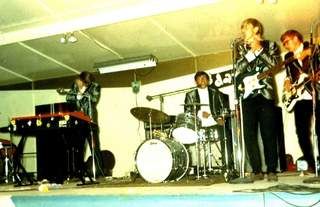
3 days & a Night
Spoken For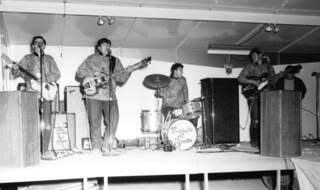
Prophets of Doom
Riot Squad
